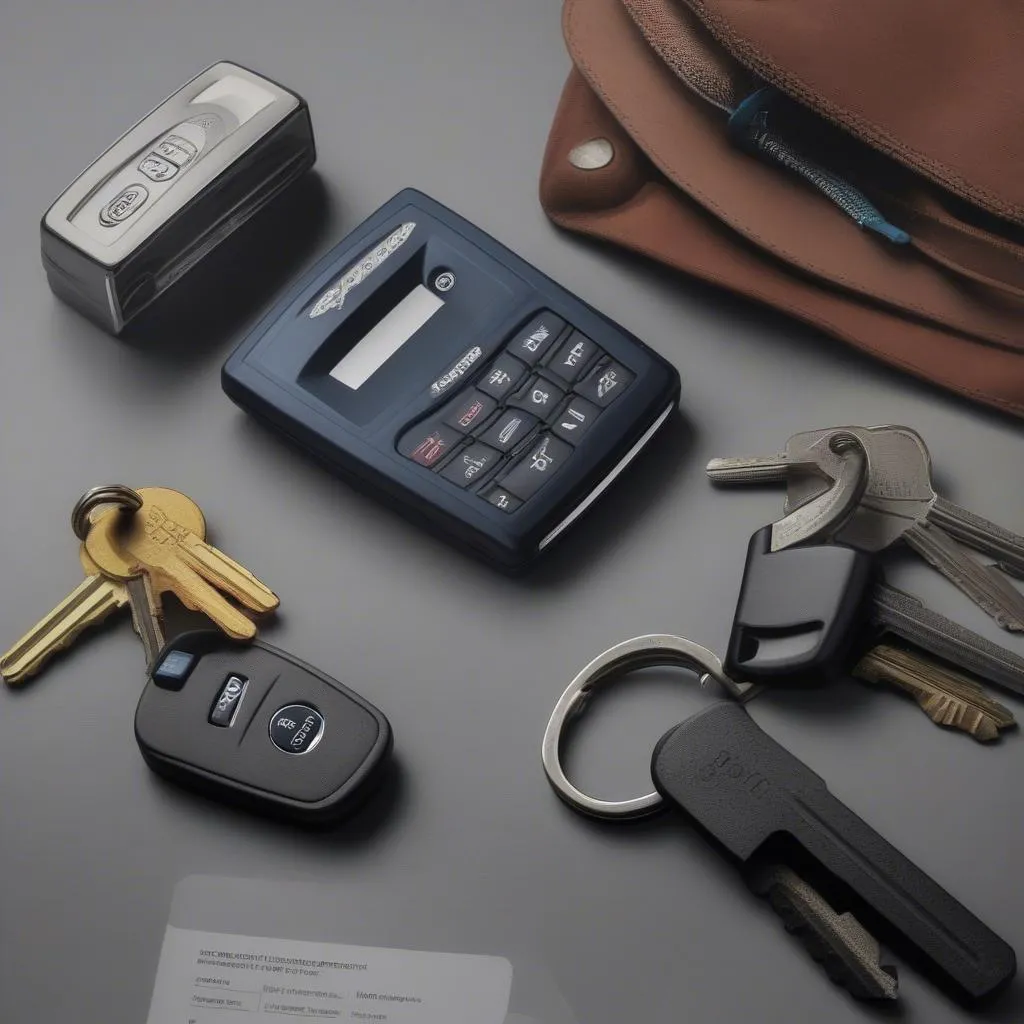If you’re experiencing issues with your 1997 Honda Civic’s brake system, chances are one or more dashboard warning lights have illuminated. These lights are your car’s way of communicating a problem that needs attention. This comprehensive guide will delve into the common brake dashboard warning lights in a 97 Honda Civic, their potential causes, and what steps you can take to address them.
Understanding Your Honda Civic’s Brake Warning Lights
Your Civic’s dashboard is equipped with several warning lights related to your braking system. Recognizing these lights is crucial to understanding the issue at hand:
1. Brake System Light: This light typically features an exclamation mark (!) enclosed within a circle and surrounded by parentheses.
- Possible Causes:
- Engaged parking brake
- Low brake fluid level
- Hydraulic system issue
2. Anti-lock Brake System (ABS) Light: This light displays “ABS” and illuminates when the ABS system detects a fault.
- Possible Causes:
- Malfunctioning ABS wheel speed sensor
- Issue with the ABS control module
- Faulty ABS pump
3. Brake Pad Wear Indicator Light: While not all 97 Civics have this, some models feature a separate warning light for worn brake pads.
- Possible Cause:
- Brake pads have reached their minimum thickness and require replacement.
Troubleshooting Brake Warning Lights in Your 97 Honda Civic
Before attempting any repairs, it’s important to diagnose the issue accurately. Here’s a step-by-step guide:
- Check Your Parking Brake: The most common reason for the brake system light is an engaged parking brake. Make sure it’s fully released.
- Inspect Brake Fluid Level: Locate the brake fluid reservoir under the hood. The reservoir will have a “min” and “max” marking. If the fluid level is below the “min” line, add the recommended brake fluid for your Civic.
- Inspect Brake Pads: If your Civic has a brake pad wear indicator light on, or if you suspect worn brake pads, it’s crucial to have them inspected and replaced if necessary.
- Scan for Trouble Codes: If the warning lights persist, you’ll need to read the Diagnostic Trouble Codes (DTCs) stored in your car’s computer. This can be done using an OBD-II scanner, which can be purchased or borrowed from most auto parts stores.
- Note: Write down the exact codes displayed as they will help pinpoint the issue.
- Consult a Professional: For issues beyond your comfort level, it’s always best to consult a qualified mechanic specializing in Honda vehicles.
Remote Diagnostics and Programming: A Modern Solution
In today’s technologically advanced world, remote diagnostics and programming offer an efficient and convenient way to diagnose and sometimes even resolve car issues, including those related to your 97 Honda Civic’s braking system.
How it Works:
- Connect to a Specialist: Using specialized software and equipment, a remote diagnostic technician can connect to your vehicle’s onboard computer.
- Comprehensive Diagnosis: The technician can run comprehensive scans to retrieve trouble codes, analyze real-time data from various sensors, and identify the root cause of the problem.
- Software Updates and Programming: In some instances, the issue might be resolved remotely by installing software updates or reprogramming certain modules.
Benefits of Remote Diagnostics:
- Convenience: No need to visit a mechanic physically.
- Faster Diagnosis: Remote diagnostics can often pinpoint issues more quickly than traditional methods.
- Cost-Effective: In some cases, remote diagnostics can save you money on diagnostic fees.
Expert Insight
“While the 97 Honda Civic is a reliable vehicle, brake system issues can occur as with any car,” says John Miller, a seasoned automotive engineer with over 20 years of experience specializing in Honda vehicles. “Regular maintenance, including brake fluid flushes and timely brake pad replacements, goes a long way in preventing major problems.”
Conclusion
Understanding the brake warning lights in your 1997 Honda Civic is crucial for ensuring your safety and the longevity of your vehicle. By following the troubleshooting steps outlined in this guide and considering the benefits of remote diagnostics, you can address brake issues promptly and effectively. Remember, if you’re ever unsure about a diagnosis or repair, seeking advice from a qualified mechanic is always recommended.
FAQs
1. Can I drive my 97 Honda Civic with the brake system light on?
It’s strongly advised against driving with any brake warning light illuminated. It could indicate a serious safety concern.
2. How often should I change my brake fluid?
Honda recommends changing the brake fluid in your 97 Civic every 2 years or 30,000 miles, whichever comes first.
3. How much does it cost to replace brake pads on a 97 Honda Civic?
Brake pad replacement costs can vary depending on location and the type of brake pads used. On average, you can expect to pay between $150 to $300 for parts and labor.
4. Can a faulty ABS sensor cause the brake system light to come on?
While the ABS light typically illuminates for sensor issues, a faulty ABS sensor can sometimes trigger the brake system light as well.
5. Is it safe to add brake fluid myself?
Yes, you can add brake fluid to your 97 Honda Civic. Refer to your owner’s manual for the recommended type of brake fluid. Be cautious not to overfill the reservoir.

